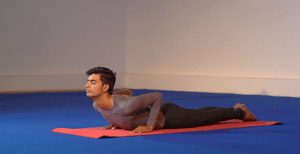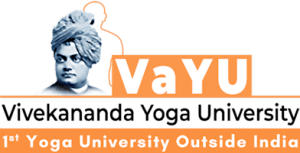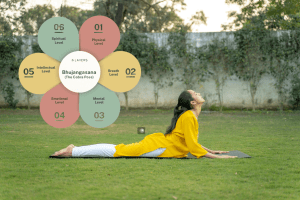From the Physical to the Spiritual: The Power of Bhujangasana (The Cobra Pose)
In today’s fast-paced world, we often find ourselves hunched over, with a rounded back and lifted shoulders. The causes can be anything like the use of a phone or laptop or stress. Physically, this can cause multiple issues such as lower back pain, shoulder pain, migraine or impaired breathing; emotionally, a heart closed in on itself is no longer open to the opportunities of life.
What if there was a simple way to reverse this tension, to bring flexibility not just to our spine but also to our minds? Enter Bhujangasana (The Cobra Pose) - the pose that offers relief on multiple levels.
A daily practice of Bhujangasana, or Cobra Pose, done the proper way, can reverse years of hunched position; it can strengthen the intrinsic muscles of the spine and thereby prevent or treat low back pain.
Bhujangasana is one of the foundational poses of Hatha Yoga; It is first mentioned in the 15th-century classical text Hatha Yoga Pradipika (Light on Hatha Yoga), where it is described as a key asana to awaken Kundalini energy. The posture resembles the cobra, rising from a coiled position, and is associated with strength, flexibility, and the awakening of spiritual energy. Bhujangasana has been practised for centuries to improve spinal health and increase vitality. Its symbolism and benefits align with the yogic goal of uniting body, mind, and spirit, making it a central posture in modern yoga practices worldwide.
Beyond these mentioned benefits, we will explore Bhujangasana on a much deeper level, examining its impact on every dimension of our being. The physical, breath, mental, emotional, intellectual, and spiritual levels. On a physical level, this asana strengthens the spine, stretches the chest, shoulders, and abdomen, and improves posture by opening up the heart and lungs. The backward bend helps alleviate lower back pain and enhances spinal flexibility. The chest expansion in the pose allows deeper breathing, which is key for nourishing the body with oxygen and stimulating vital organs like the liver and kidneys.

At the breath level, Bhujangasana encourages deep diaphragmatic breathing, promoting fuller lung capacity and better oxygen flow throughout the body. This increased breath awareness directly affects the mental level, calming the mind and reducing stress. The steady, deep breaths activate the parasympathetic nervous system, helping to lower anxiety and fostering a sense of relaxation. Mentally, this pose cultivates focus and awareness, as holding the posture requires mindful engagement with the breath and body.
On an emotional level, Bhujangasana opens the chest, which is often where emotional tension is stored. By creating space in this area, the pose helps release stored emotions, fostering emotional balance. The intellectual level is engaged as practitioners focus on alignment and proper technique, bringing body awareness and critical thinking into the practice. Lastly, on a spiritual level, the posture symbolizes rising energy, often linked with the awakening of Kundalini energy in yoga philosophy. This upward movement connects the body, mind, and spirit, encouraging a deeper connection with the self and the world around us.
Incorporating Bhujangasana into your practice offers a holistic experience, addressing the physical, breath, mental, emotional, intellectual, and spiritual aspects of well-being. Its therapeutic effects and deeper connection to the body and mind make it a powerful tool for personal growth and healing. If you're interested in exploring these dimensions in a more profound and structured manner, consider joining Vivekananda Yoga University, where you can learn Bhujangasana and other postures from a therapeutic and research-oriented perspective, gaining insights that go far beyond the mat.

